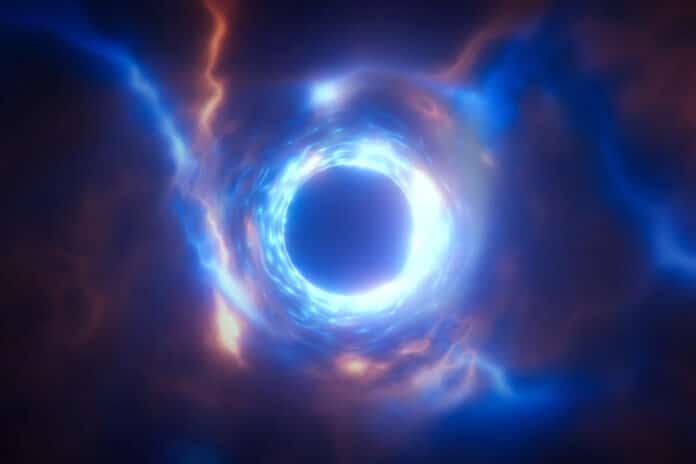Supermassive black holes (SMBHs) reside at the center of every massive galaxy in the local universe with masses that closely correlate with observations of their host galaxy, implying a connected evolutionary history. The population of binary SMBHs, which form following galaxy mergers, is expected to produce a gravitational-wave background (GWB) detectable by pulsar timing arrays (PTAs).
In a recent study, Joseph Simon, a postdoctoral researcher in the Department of Astrophysical and Planetary Sciences at CU Boulder, used computer simulations to predict the masses of the largest supermassive black holes in the universe. His findings imply that black holes may have been significantly larger than previously thought billions of years ago. The discoveries may illuminate an even greater mystery, explaining the processes that molded things like Sagittarius A* as they evolved from tiny black holes into the enormous objects they are now.
The astrophysicist is part of a second research effort called the North American Nanohertz Observatory for Gravitational Waves (NANOGrav). Through the project, scientists searched for the phenomenon called the “gravitational wave background.”
The concept refers to the regular flow of gravitational waves, or enormous space-time ripples, that oscillate through the universe continuously.
Supermassive black holes are also the cause of this cosmic churn’s formation. Simon said that the central black holes of two galaxies might collide or even merge if they encounter one other in space. They spin endlessly around one another before colliding like two cymbals in an orchestra, but this collision produces gravitational waves, which stretch the fabric of space-time.
However, to comprehend the gravitational wave backdrop, astronomers must first determine the precise mass of the supermassive black holes in the universe. Simon claimed that bigger cymbals produce significantly greater gravitational waves and a bigger bang. However, there’s one problem:
Simon said, “We have really good measurements for the masses of the supermassive black holes for our galaxy and galaxies nearby. We don’t have those same kinds of measurements for galaxies farther away. We have to guess.”
Simon decided to make an entirely fresh estimate in his latest research.
He started by gathering data on thousands of galaxies, some of which were billions of years old. Observing distant galaxies by humans involves gazing back in time because light can only move so quickly. With this knowledge’s aid, Simon could estimate the black hole masses of the universe’s greatest galaxies. The gravitational wave backdrop those galaxies might produce currently covers Earth and was then simulated using computer models.
Simon’s results reveal the whole smorgasbord of supermassive black hole masses dating back roughly 4 billion years. He also noticed something odd: There seemed to be a lot more large galaxies spread throughout the universe billions of years ago than some previous studies have predicted. That needed to make more sense.
Simon said, “There’s been the expectation that you would only see these massive systems in the nearby universe. It takes time for black holes to grow.”
The study suggests that they might not need as much time as astrophysicists once believed. The NANOGrav team, for example, has seen similar hints of giant black holes hiding in the universe billions of years ago.
Journal Reference:
- Joseph Simon. Exploring Proxies for the Supermassive Black Hole Mass Function: Implications for Pulsar Timing Arrays. The Astrophysical Journal Letters. DOI: 10.3847/2041-8213/acd18e
